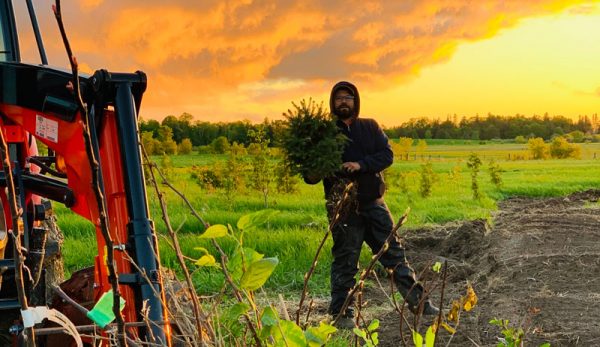
When deciding on equipment and tools for a farm, it is important to understand the scale of your property size and size of production area, your landscape and topography, and the type of operation.
As a general rule, the smaller the property size, then the smaller the equipment scale needed. Additionally, properties with more slope or tight spaces may benefit from smaller equipment types.
On the other hand, larger properties and those with more open layouts will benefit from larger-sized equipment. And properties that have more intensive operations may want to increase the scale of their equipment relative to the property size.
Different operations will always have some equipment that are more suitable to farm and garden tasks, often regardless of size.
Let’s look at these considerations, relative to three common equipment scales, in more detail .
Three Primary Scales of Grower Equipment
For the purposes of a discussion about equipment scale, we can break things down to three core equipment scales for growers. They are:
- Hand tools
- Two-wheel tractors
- Four-wheel tractors
Read more: These are the 4 hand tools that your farm absolutely needs.
Hand Tools
First, we have the familiar array of hand tools: shovels, rakes, hoes, etc. But you can also find a wider array of specialized hand tools available for growers who want to produce more (or maybe just make gardening easier) in their garden space. Many of these are light years ahead in their utility and offer numerous benefits to a serious grower operating on a small scale.
Whether you’re working in a single backyard garden bed or many acres of production, handheld garden tools are indispensable! And for many—especially smaller growers—they get the job done without requiring larger equipment.
Two-Wheeled Tractors
But for those needing powered assistance in their growing pursuits, two-wheeled, walk-behind tractors are very suitable for home growers, homesteaders and commercial operations on smaller acreages.

In many cases even larger farms will still make use of two-wheeled tractors. They do a great job in specialized situations that require maneuverability, such as intensive hoop house or greenhouse management.
Read more: Check out these essential implements for a walk-behind tractor.
Four-Wheeled Tractors
Finally, we come to the largest-scaled piece of farm equipment, the four-wheeled tractor.
This last category is very broad. Machines in this bucket range from subcompact tractors, which are essentially a beefed-up riding lawn mower with a three-point hitch and a bucket, to large machines boasting 150 hp.
Subcompact
For most of us, though, a subcompact tractor will easily handle most (if not all) of the work we throw at it. Subcompact tractors are great to facilitate medium acreage operations, or to work alongside larger tractor for specialized work.
Again, you may enjoy using a subcompact tractor in a large greenhouse to bring in compost and do land preparation.
Medium to Large
And while a subcompact tractor is the tractor of choice for many hobby or small farmers, some may find their operations require a more-powerful tractor.
You can work your way up to a medium-sized, 75 hp tractor, which puts you officially in the agricultural category. Beyond that, you’ll find the 100-plus hp tractors used on larger farming operations.
So we’ve broken down farm equipment into three basic categories based on scale. But what does this mean for you and your growing operation? Next, we’ll look at some common scenarios to determine what you and your crops really need.




